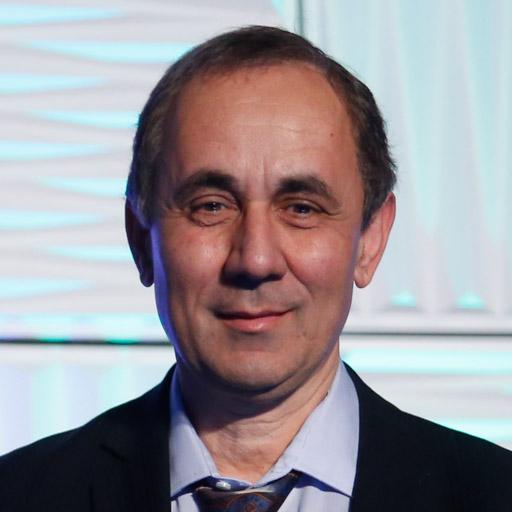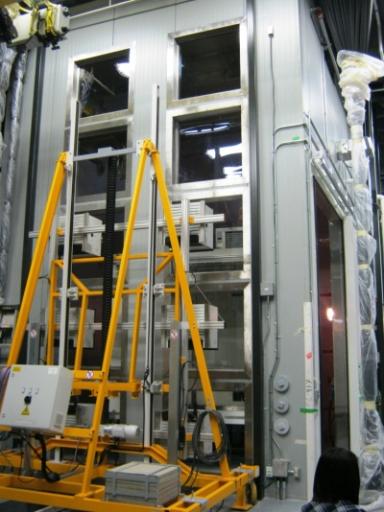
Andreas K Athienitis, Eng., PhD, FCAE, FASHRAE, FIBPSA
- Professor, Building, Civil, and Environmental Engineering
- Director, Centre for Zero Energy Building Studies
Are you the profile owner?
Sign in to editResearch areas: Solar Energy Engineering, Energy Efficiency, Renewable energy, energy efficiency. Integrated photovoltaics/solar energy utilization systems, Modeling, optimization and control of building thermal systems, Heating ventilation air-conditioning (HVAC), Numerical simulation of heat transfer, Thermal performance of the building envelope,
Contact information
Biography
Overview
Education
- Ph.D. Mechanical Engineering, May 1985, University of Waterloo, Waterloo Canada
- B.Sc. Mechanical Engineering, May 1981, University of New Brunswick, Fredericton Canada
Honours and awards
- Fellow, Canadian Academy of Engineering
- Fellow, ASHRAE
- Fellow, IBPSA
- Concordia University Research Award (Technology, Industry and Environment - Established Category) 2010.
- Concordia University Research Chair Tier I (Jan. 2006 – present) – Integration of Solar Energy Systems into Buildings.
- Willis H. Carrier Best Paper Award from American Society of Heating, Refrigerating and Air Conditioning Engineers (1991).
- Izaak Walton Killam Post Doctoral Scholarship (University of Alberta, Dept. of Mechanical Engineering, 1985-87).
- Commonwealth Scholarship (University of New Brunswick: 1978-81).
Scholarly and professional activities
- Associate Editor, Journal of Building Performance Simulation
-
Appointed to Intergovernmental Panel for Climate Change (IPCC) (2009).
-
Member of NSERC Selection Panel for Discovery Grants in Mechanical Engineering, 2009-2012.
-
Member of Canadian Delegation in US-Canada Clean Energy Roundtable Dialogue, Washington, June 2009.
-
Subtask B (Design tools) co-leader, IEA SHC Task 40 / ECBCS Annex 52 “Towards Net-zero Energy Solar Buildings” (2008 – present)
-
Member of NSERC Selection Panel 2 for Strategic Grants (Energy), 2007 – 2008.
-
Associate Editor, Journal of the Intern. Solar Energy Society "Solar Energy", 1997-2004.
-
Member of the Building Operation Dynamics Technical Committee, and of the Radiant and in-space Convective Heating and Cooling Technical Committee of ASHRAE (2004-2006).
Professional society memberships
-
Member, Order of Engineers of Quebec
-
Member, Canadian Society of Mechanical Engineers
-
Member, American Society of Heating, Refrigerating and Air Conditioning Engineers (ASHRAE).
-
Member, International Solar Energy Society (ISES).
Research interests and activities
Research activities are focused on energy design and optimal control of high performance buildings, optimization of building-grid interaction, development and integration of solar energy systems into buildings to generate electricity, useful heat and for daylighting. My long term vision is the realization of solar-optimized buildings operating in Canada as integrated advanced technological systems that generate in an average year as much energy as they consume.
A key element of our approach is that solar technologies are integrated in an optimal manner with energy efficiency measures, with the building envelope and with HVAC systems, so the potential energy savings are even higher than separately applying the two approaches and reductions in total cost may be realized.
I am looking for new graduate students and postdoctoral fellows with strong backgrounds in building engineering or civil/mechanical engineering and related fields (applied physics, architectural engineering etc) to work in exciting projects using a new state-of-the-art solar simulator and environmental chamber – an internationally unique laboratory, and a suite of our custom-developed building software tools.

Dr. Athienitis with the JMSB solar façade system in the background.
Teaching activities
Courses
BLDG 6951 SOLAR BUILDING MODELLING AND DESIGN
Design principles of solar buildings, including direct gain, indirect gain and solaria. Analytical and computer models of passive systems. Performance of glazing systems, transparent insulation, and airflow windows. Building-integrated photovoltaic systems. Thermal storage sizing for solar energy
storage; phase-change thermal storage. Thermosyphon collectors. Prevention of overheating, shading systems and natural ventilation.
ENGR 681 ENERGY RESOURCES: CONVENTIONAL AND RENEWABLE
Depletion of conventional energy sources and emission of greenhouse gases. Principles of renewable energy systems; production of electrical and thermal energy, photovoltaic systems, wind power, fuel cells, hybrid systems. Reduction in carbon dioxide and other emissions. Hydrogen and other forms of energy storage for renewable power production. Integrated energy systems for buildings and automobiles. Small-scale renewable energy systems for buildings; independent versus grid-connected systems.
BLDG 6731 BUILDING ILLUMINATION AND DAYLIGHTING
Production, measurement and control of light. Photometric quantities, visual perception and colour theory. Daylight and artificial illumination systems. Radiative transfer, fixture and lamp characteristics, control devices and energy conservation techniques. Design of lighting systems. Solar energy utilization and daylighting. Integration of lighting systems with mechanical systems for energy conservation and sustainable development. Students will complete a design or research project.
Student supervision
I am currently supervising 12 Ph.D and 4 M.A.Sc. students, as well as two researchers. Employers of graduated students include Purdue University, Carleton University, Hydro-Québec, BrainBox AI, Canada Mortgage and Housing Corporation, SNC- Lavalin, Natural Resources Canada – CANMET, Hong Kong Polytechnic and several large engineering design and consulting firms.
Students interested in my projects may contact the Administrative Coordinator Lyne Dee lyne.dee@concordia.ca or myself.
Research activities
Current projects
Funded by NSERC, NRCan, CFREF Volt-Age, Hydro-Québec, and other industries:
- Integrated modelling, design and predictive control of thermal zones with different types of heating and cooling systems;
- Load and demand management in solar-optimized buildings;
- Development of innovative photovoltaic-thermal systems and their integration into the building envelope and with HVAC systems;
- Solar design, modeling and daylight control of perimeter zones in office buildings;
- Modelling and design of net-zero energy solar buildings;
- Test of novel concepts in a large scale solar simulator – environmental chamber laboratory; this unique laboratory enables testing of solar systems and advanced building envelope components under simulated sunlight and exterior temperatures in the range -40 C to 60 C. This internationally unique lab includes a large scale solar simulator.
Research facilities
Major research facilities of my team are the Solar-Daylighting lab on the 16th floor of the EV building and the newly built Solar simulator – Environmental Chamber Laboratory. The Solar-Daylighting lab and its adjacent atrium as well as the roof of EV and BE is used for many unique projects. A variety of equipment has been acquired, including solar instruments, infrared camera, particle image velocimetry system and heat flow meters.
The large scale solar simulator shown in the figure below (left) integrated with a two-storey high environmental chamber (right) is a unique facility that allow the testing and development of building-integrated solar systems and advanced envelope assemblies under a broad range of simulated outdoor temperatures and solar radiation levels.
Demonstration projects
Dr. Athienitis and his students played a key role in the design of the EcoTerra - an innovative solar house built under the EQuilibrium housing demonstration program conducted by CMHC. The house includes roof building-integrated photovoltaic/thermal (BIPV/T) systems designed by Athienitis and his students. Simulation models for research, design and control, as well as innovative whole-house energy systems aimed at achieving net-zero annual energy consumption have been developed. These systems integrate our BIPV/T designs with existing technologies such as passive solar and ground source heat pumps. A BIPV/T roof based on concepts and designs developed by our group was built as a complete prefabricated module in the factory of our partner Alouette Homes, who received the "Reconnaissance - Recherche et développement en habitation" award of the Quebec Construction Association in 2008 with special mention of our team’s role in the research. This is the first time that a complete roof section is built as a hybrid solar-thermal and electricity generating system (BIPV/T roof), complete with wiring, ducting and ready for assembly with other building modules.
Another recent demonstration project of our team involves a full scale facade-integrated BIPV/T system at the JMSB building of Concordia University, which received much national and international attention, including a special program on Discovery Channel.
Finally, our team played a key role in the conception and generation of the energy concept and form of the Varennes Library, Canada’s first institutional solar net-zero energy building (inaugurated May 2016). It has Quebec’s largest building-integrated solar system conceived to generate about as much energy as it consumes in an average year. The building operation and grid interaction is being optimized under a NSERC/Hydro Quebec Industrial Chair held by Athienitis.

Concordia solar simulator testing BIPV/T air collector in horizontal position (can vary tilt angle from vertical to horizontal).

Concordia mobile solar simulator with two-storey high environmental chamber (custom design).

Varennes Net-zero Energy Library
Publications
Selected recent refereed journal papers and books
Selected books and proceedings edited
Athienitis, A.K., ed. (2020). Roadmap to Resilient Ultra-Low Energy Built Environment with Deep Integration of Renewables in 2050: Proceedings, Montreal Symposium. Centre for Zero Energy Building Studies, Concordia University, and Canadian Academy of Engineering, Montréal, Canada. ISBN 978-0-9690101-1-1. https://spectrum.library.concordia.ca/id/eprint/987839/1/Roadmap%20Symposium%20Proceedings.pdf
Athienitis, A.K. and O'Brien, W. (Eds.). (2015). “Modelling, Design, and Optimization of Net-Zero Energy Buildings”. John Wiley & Sons. (396 pages).


